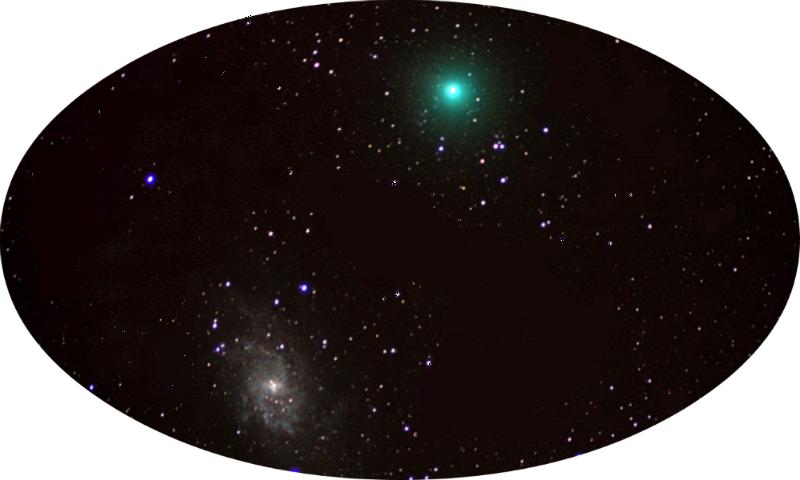Description
The Discovery Channel Telescope being commissioned by Lowell Observatory operates with a Telescope Control System that points the DCT at a target and allows the operator to fine-tune the observation of a target. Typically, observations may take about ten minutes, affected by factors such as atmospheric conditions, nearby bright bodies, and stellar magnitude.

Dramatization: an example of a poor night of observations. Note the missing areas of celestial bodies.
The operator has a catalog, or list, of stellar targets to be used in a particular night’s observations. Currently, the operator manually chooses targets from that list in an order based on experience and changing conditions, such as changing weather and star motion. The problem is to create a scheduler so that a catalog can be automatically ordered to make the best use of the DCT.
Obviously, this scheduler would want to pick the stars in a manner that minimizes the movement of the telescope. However, there is a complicating criteria – coverage of the whole sky is as important as coverage of the maximum number of stellar targets. For example, should weather conditions cause a significant portion of the targets to be missed, then it would be desirable for the targets that were observed to be spread over the visible sky rather than clumped in one area.
The solution to this is to impose a ‘grid’ of some kind on the sky and make sure that observations skip from grid location to grid location, covering the entire grid with ‘best targets’ before reiterating and picking targets that were missed in the first iteration. The grid itself is arbitrary and is merely used to ensure that the entire visible sky is covered. It is also ‘fixed’ so that stellar targets will move on the grid as observations progress. Thus, a target that was observed in one grid location may be in another grid location when that location is selected for scheduling. So the scheduler has to not only keep track of observed grids but also observed targets.
While a straight-forward solution might seem to be a regular sweep of the sky from west to east in arc-sweeps, there are some factors that prevent this. Horizon brightness (setting and rising sun) means that viewing the west horizon should be postponed until later in the night and the east horizon should be viewed earlier. The position of the moon can also affect target viewing. Less predictable is the weather; parts of the sky may not be visible due to clouds or smoke.
Therefore, a scheduling solution will have to be both dynamic, picking reasonable next targets as the observations progress, and controllable, allowing an operator to override the scheduler due to conditions the scheduler cannot be aware of. Once a target is picked, the scheduler can deliver it to the Telescope Control System, saving the operator the work of manually entering it.
